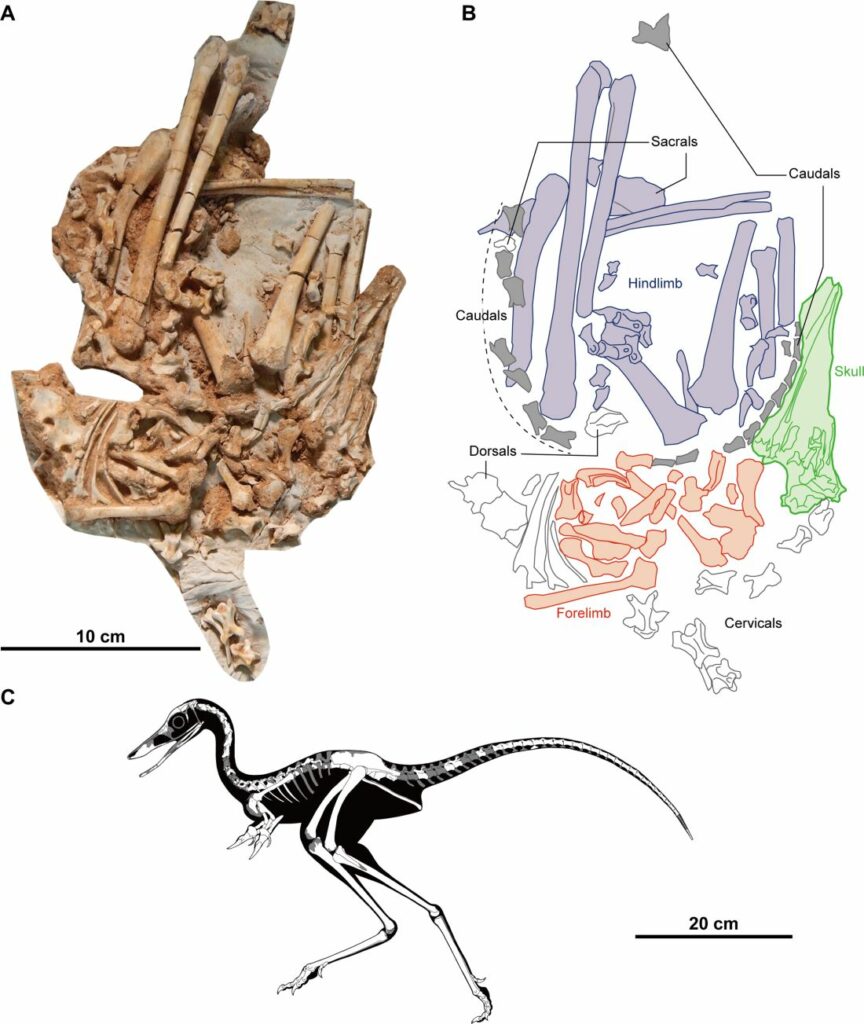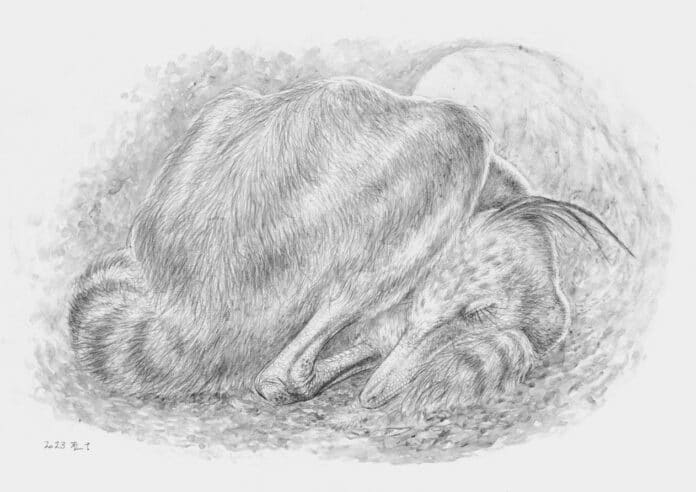Researchers discovered a new alvarezsaur type, Jaculinykus yaruui gen. et sp. nov., from the Late Cretaceous of Mongolia. They found a nearly complete and articulated skeleton in a position that suggests it slept like modern birds.
The phylogenetic analysis reveals that Jaculinykus belongs to the sub-clade of Alvarezsauridae, Parvicursorinae, and forms a monophyletic group with Mononykus and Shuvuuia.
Alvarezsauria is a group of unique theropod dinosaurs. The latest members of this group share bird-like characteristics such as a lightweight, movable skull, a keeled sternum, a fused carpometacarpus, and backward-pointing pelvic bones. These dinosaurs also underwent size reduction during their evolution.
The unusual features of Alvarezsaurs have attracted significant attention for their function and evolution. Alvarezsaur fossils are found globally, primarily in Asia and South America. In particular, the Nemegt Basin in Mongolia has abundant fossil remains of late-branching alvarezsaurs, with eight documented genera so far.
Despite the recent increase in the fossil record of alvarezsaurids, the detailed anatomy of the members still needs to be improved because most of the fossil remains are fragmentary. This often leads to difficulty interpreting their ecology and poorly resolved phylogenetic interrelationships.
In this study, researchers discovered a nearly complete and articulated alvarezsaurid skeleton, including the skull, from the Baruungoyot-Nemegt. The fossil was found in a stereotypical avian-like sleeping position with the neck and tail arched and hind limbs folded under the pelvis.
The finding reveals the complete anatomy of alvarezsaurids and offers strong evidence that avian-like behavior existed long before paravians.
The posture of Jaculinykus shows the following features: the hind limbs folded on either side of the body; the left forelimb folded next to the body with the elbow; the neck curved posteriorly on the right side of the body; the tail positioned on the left side and curled around the flexed hind limbs to the right.
Despite displacements of both forelimb elements of Jaculinykus, these bones are tucked underneath the body as in the hind limb. This posture differs from the opisthotonic posture commonly seen in theropod dinosaurs, in which the body lies on one side with both neck and tail arched dorsally.

Scientists noted, “The specimen was dorsoventrally crushed during or after burial, and this seems to have resulted in twisted displacement of the posterior half of the body and lateral displacement of forelimb elements and caudal vertebrae.”
“Its well-preserved manus has only two fingers, composed of a hypertrophied digit I and greatly reduced digit II, which implies an intermediate condition between the tridactyl manus of Shuvuuia and monodactyl manus of Linhenykus. This highlights a previously unrecognized variation in specialization of alvarezsaurid manus.”
Significantly, the specimen’s preserved posture reveals a typical avian-like sleeping position, similar to those of the troodontids Mei and Sinornithoides. This behavior in the alvarezsaur Jaculinykus provides more evidence that features characteristic of birds are widely dispersed among avian predecessors, pointing to the maniraptoran synapomorphy of stereotypically avian sleeping postures.
From the phylogenetic position of the fossil, this discovery further supports the hypothesis that alvarezsaur feathers may be more complex structures with a rachis seen in ornithomimosaurs and other maniraptorans for thermoregulation, display, and reproduction than simple filament structures previously thought.
Journal Reference:
- Kohta Kubo ,Yoshitsugu Kobayashi, Tsogtbaatar Chinzorig, Khishigjav Tsogtbaatar. A new alvarezsaurid dinosaur (Theropoda, Alvarezsauria) from the Upper Cretaceous Baruungoyot Formation of Mongolia provides insights for bird-like sleeping behavior in non-avian dinosaurs. Plos One. DOI: 10.1371/journal.pone.0293801
